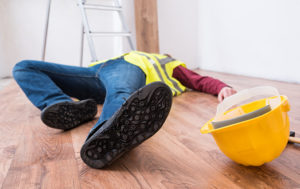
We’ve all seen those signs at businesses or job sites where physical labor is king. The sign reads “### DAYS SINCE THE LAST INJURY.”
Whether you’re a worker or the owner of a company, you want that number to be as high as possible. If the sign reads “0 DAYS SINCE THE LAST INJURY,” ugh, that means somebody’s hurting and it’s affecting the bottom line for the company and everyone who works there – because injuries drive up insurance premiums, increase downtime, decrease productivity, and chip away at profitability, raises, bonuses, etc.
Of all the common injuries associated with physical labor, hernias are a big one. But when is a suspected hernia really a hernia? When is it simply a muscle strain that triggers hernia-like symptoms?
Well, let’s get into the subject to help improve everyone’s understanding – from the foreman and new guy on the shop floor to the safety director and company owner. We’ll start with a real-life scenario:
Meet Tony
Tony works on the loading dock of a manufacturing company, dutifully stacking packaged products into delivery trucks. He’s strong and works like a machine. While pulling a pretty hefty package off the forklift palette, Tony’s grip slips and the box is going down. Like a shortstop fielding a low bouncer, Tony drops to his right side and saves the day. It takes everything he has, but he keeps that box from hitting the pavement and breaking the valuable contents.
Tony finishes out the day, sore but diligent. However, the next day his sturdy body doesn’t have the oomph for heavy lifting. He fears he has a hernia, so he reports his injury to HR and spends the day doing low-impact tasks.
Does Tony Have a Hernia?
Tony’s symptoms certainly indicate a potential hernia. He has abdominal wall pain, some swelling in his groin area, and the symptoms persist for a few days. If he does have a hernia, it’s almost certainly an inguinal hernia. Roughly 80 percent of similar work-related injuries are inguinal.
What Should Tony’s Employer Do?
Before Tony rushes off to the ED or an O.R. for hernia repair, an exam is in order. The best course of action is to schedule a visit with an occupational health clinic, the injured worker’s primary care provider or a hernia surgeon. A physical exam is the ideal first step, and there is no immediate need for expensive CT scans, Ultrasounds, or MRIs.
The Verdict(s) Are In
After Tony’s physical examination and a review of his health history, the acting medical professional can make one of two assessments:
1. It’s a Muscle Strain
If Tony has merely sustained a strain, he’s advised to perform only light-duty labor at work until his symptoms subside and his strain heals. He should resist lifting anything over 25 pounds and avoid repetitive motions or anything that triggers discomfort. Over-the-counter pain/anti-inflammatory meds are recommended, as is icing the affected area and performing stretches to relax and strengthen Tony’s muscle fibers. He may need physical therapy to address any underlying core muscle imbalances or poor lifting mechanics.
2. It’s a Hernia
The provider gives Tony the news: “You have an inguinal hernia. But don’t worry, it’s easy to repair.” He’s referred to a true, hernia-focused practice like Boston Hernia, where he meets with the team to discuss surgical options. The Fast Recovery Inguinal Hernia Surgery is identified as the ideal strategy for Tony’s condition. It’ll fix what needs fixing and give him a fast recovery so he can get back to his job as quickly as possible.
At Boston Hernia, Tony has his initial appointment within 24-48 hours after his case manager calls and has his surgery within 30 days. Following the mesh repair and a few days of post-op healing, Tony returns to work doing light-duty tasks – mainly desk work, since it’s important to keep his physical exertion controlled.
Meanwhile, a Couple Weeks Later
Some hernia patients require up to six weeks to heal and resume their physical jobs. But Tony is as tough and healthy as a horse, and he feels ready for full duty in just 16 days. Still, his employer and the providers at Boston Hernia, insists that he take it slow and avoid the big lifting for a few more weeks, at least until he has had at least two weeks of physical therapy. The company is smart to issue those orders, and Tony is wise to follow them. Safety is critical. After all, the health and well-being of employees leads to a better work environment. For groin strains, physical therapy is recommended to manage healing and re-entry to physically demanding tasks and activities. For patients with strenuous jobs, Boston Hernia always recommends post-operative physical therapy for two to four weeks to help people get correct body mechanics before fully returning to work.
If you suspect you’ve experienced a hernia on the job, or if you’re in charge of reported injuries at the company you work for, call or visit Boston Hernia to discover how we can be your partner for health and fast back-to-work recoveries. Our goal is to get an injured worker back to work as quickly as possible.

